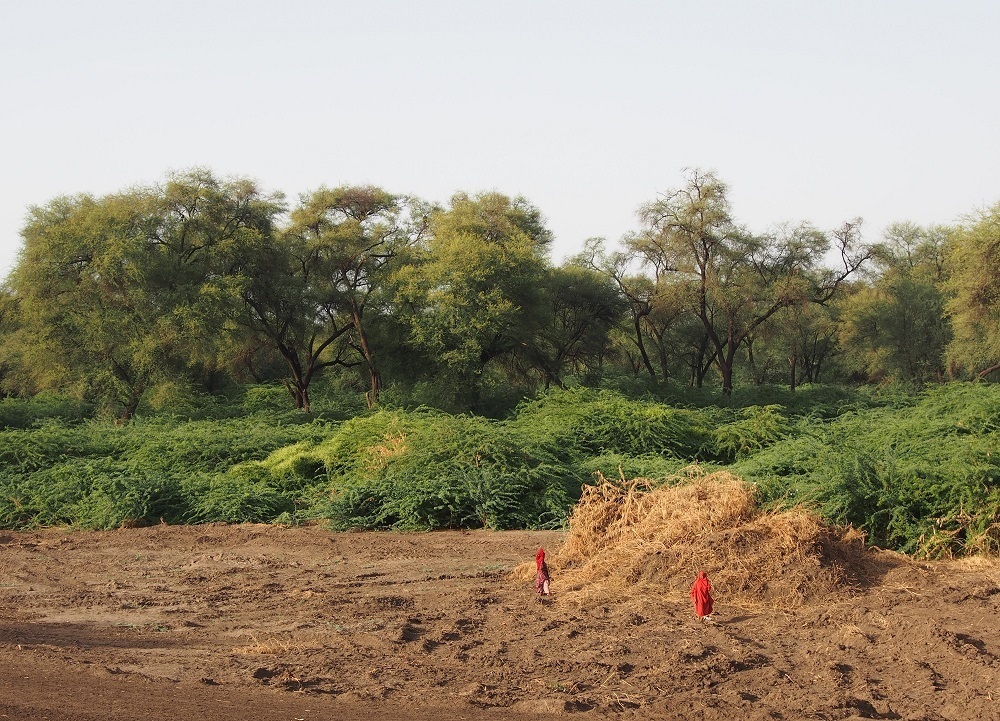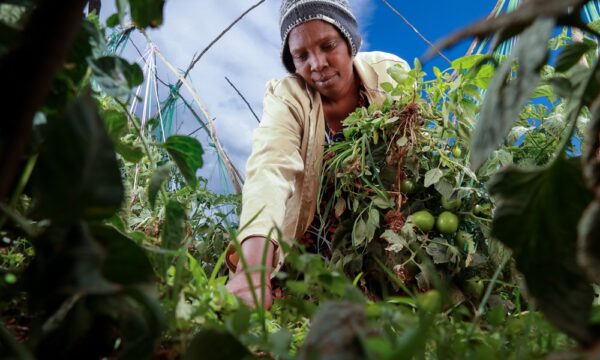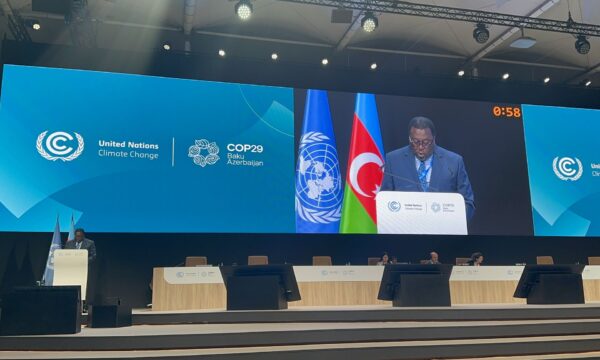
On 22nd May, we mark the International Day for Biological Diversity. In this article, CABI’s Global Director for Invasive Species Dr Hariet Hinz looks at how we can reclaim our landscapes from threats to biodiversity.
Biodiversity loss is proceeding at an unprecedented pace. It jeopardizes the stability of natural ecosystems and increases vulnerability to climate change. Biodiversity loss is happening on a global scale. However, many low- and middle-income countries (LMICs) bear the brunt of its loss. These countries are often home to biodiversity hotspots, rich in species diversity. Local populations rely heavily on the natural world, and its loss impacts their livelihoods, from pastoralism to tourism. One of the major drivers of biodiversity loss is the spread of invasive species.
The threat of invasive species
After land-use changes, invasive species are the second most significant threat to global biodiversity loss. These species have moved from one country to another without their natural enemies. In their new habitats, they thrive uninhibited, invading and overwhelming natural ecosystems. In East Africa, for example, the invasive plant Prosopis juliflora has impacted biodiversity loss. Researchers have described it as one of the world’s most serious non-native species. Prosopis was introduced to East Africa in the 1970s for fodder and wood. However, its rapid spread has reduced biodiversity and degraded ecosystems. It crowds out native species and renders fertile land less productive.
In Baringo County, Kenya, prosopis coverage increased from 882 hectares in 1988 to 18,792 in 2016, reducing biodiversity. Rainfed cropland has decreased by 37.3%, irrigated cropland by 56.6% and grasslands by 86.5% in this one county alone. Vachellia species – a type of shrub – have decreased by 42.3%. These types of lands are essential for biodiversity and rural people’s livelihoods. Also, in Kenya, prosopis has overrun vital flamingo habitats. Damage is evident in the Lake Bogoria National Reserve. The lake hosts three million birds – including the largest lesser flamingo population in the world. As the flamingos attempt to land in the dark, they become entangled in the thorny thickets of prosopis and die from their injuries.
In Ethiopia’s Middle Awash Basin, prosopis coverage has increased from 2.16% in 2003 to 8.61% in 2023. This increase correlates with a decrease in rangelands of more than 25%. This form of biodiversity loss has adversely affected grazing areas. In Tanzania’s Lake Natron Basin, the prosopis invasion has forced pastoralists from livestock farming. This has threatened not only their livelihoods but also food security. However, solutions are at hand.

Finding solutions, working with local communities
CABI has worked with partners to manage the spread of prosopis. The work builds on two Woody Weeds projects, developing coordinated, effective responses. Central to this effort is the involvement of local communities. They play a crucial role in managing invasive species through participatory approaches. These include manual removal and land rehabilitation. The initiatives have fostered collaboration between stakeholders. They have subsequently uncovered valuable insights about controlling prosopis. With new insights come opportunities to restore biodiversity and native ecosystems.
Woody Weeds
The Woody Weeds project ran from 2015 to 2021. It aimed to mitigate the adverse effects of woody plant species on biodiversity, ecosystem services and human well-being in East Africa. CABI implemented the project in Ethiopia, Kenya and Tanzania. The work generated knowledge about the invasion of prosopis. It revealed, for example, insights into prosopis water consumption, which is equivalent to 50% of the total rainfall in the invaded area. In Kenya’s Afar and Baringo counties, prosopis has significantly reduced fodder for livestock. It has also reduced local biodiversity, including medicinal plant species. Together with local and national stakeholders, the Woody Weeds project developed management practices to slow down the further spread and reduce the density of the species.
Woody Weeds+
In 2021, CABI launched the Woody Weeds+ project, which ran until 2024. This initiative built on the work of the initial project. It supported the implementation of Kenya’s National Prosopis Strategy. The government of Kenya drafted this strategy based on knowledge and recommendations from the first project. Woody Weeds+ raised awareness about the long-term impacts of the prosopis invasion. It also shared knowledge about effective prosopis management and supported cross-sectoral, multi-scale governance of prosopis management. Moreover, it pioneered prosopis management strategies in test areas and supported upscaling. CABI implemented Woody Weeds+ in Kenya’s Baringo, Isiolo and Tana River Counties. The work involved frequent collaboration with neighbouring counties.
Collaboration at a local level
Through the projects, CABI has brought together diverse partners. The work has led to the successful management of prosopis on community land and in protected areas. In several counties in Kenya, stakeholders across various sectors have united in county groups. From land users to policymakers, they work to find solutions to prosopis control. In Tanzania, awareness-raising initiatives and training have helped those impacted by Prosopis. The project has armed community members with knowledge and skills, including information on herbicide use and tools to remove prosopis trees manually.

The bigger picture: Taking an Integrated Landscape Management approach
CABI’s projects in East Africa illustrate concrete actions that communities can take to manage prosopis. They help us to understand and reduce invasive species and biodiversity loss. However, the initiatives build on a bigger and more holistic approach to protecting biodiversity – the Integrated Landscape Management (ILM) approach.
Biodiversity loss, climate change and land degradation are interconnected threats. As such, they need solutions that cut across and transcend national and sectoral boundaries. ILM is one such approach. It refers to long-term collaboration among diverse stakeholders. This may include, for instance, pastoralists, farmers, civil society groups, government representatives and policymakers. The approach fosters natural resource resilience at the landscape level. Across a mosaic of human-nature interactions, it supports equitable and sustainable livelihoods. At the same time, it aims to enhance biodiversity conservation and improve ecosystem goods and services.
Long-term collaborations that empower local communities are central to ILM. They safeguard local stakeholders’ interests alongside state actors, NGOs and the private sector. Interventions should create a win-win situation. They show how sustainable approaches benefit everyone with a stake in the landscape.
Restoring landscapes: Community-led action against prosopis in East Africa
The Woody Weeds projects have had a substantial impact in East Africa. For example, members of two communities around Lake Natron, Tanzania, have successfully managed the spread of prosopis. Together, they have removed trees on over 20 hectares of communal land. The project has increased access to land and restored essential grazing pastures. The work is a classic example of ILM in action. The approach helps communities to be proactive. People are now implementing solutions that benefit their livelihoods.
Concerted efforts across Lake Bogoria National Reserve have also been successful. They have led to the removal of prosopis trees across the protected area. The groups partnered with local communities. Together, they have burnt or manually cleared prosopis rootstocks. This carefully coordinated effort is protecting lesser flamingo habitats and has already significantly reduced the number of deaths among flamingos. Moreover, it is reopening wildlife corridors invaded by prosopis.
The spread of invasive species like prosopis poses serious threats to biodiversity. They also put livelihoods and food security across East Africa at risk. CABI’s collaborative projects show how solutions grounded in local participation can help. Cross-sectoral cooperation offers a way forward. Empowering communities and supporting government strategies are key. By applying ILM, these initiatives control invasive species. They also help to restore landscapes, protect biodiversity and strengthen resilience to climate change. These successful efforts show how important it is to collaborate over the long term. By working in partnership, we can prevent biodiversity loss and build healthier ecosystems.
Further information
Main image: Uprooting prosopis for farm preparation is labour intensive but benefits quickly outweigh the initial investment (Credit: René Eschen).
Related news and blogs:
1 Comment
Leave a Reply
Related News & Blogs
Pesticide risk reduction supports sustainable food systems – here’s how
Reducing pesticide risks protects farmers, consumers, and the environment. On World Food Day, CABI highlights how safer, science-based pest management supports sustainable food systems and strengthens food security.
16 October 2025






Collaboration plays a crucial role in addressing environmental challenges such as the spread of invasive species. This approach promotes sustainability and helps preserve the natural resources that communities rely on for their livelihoods.